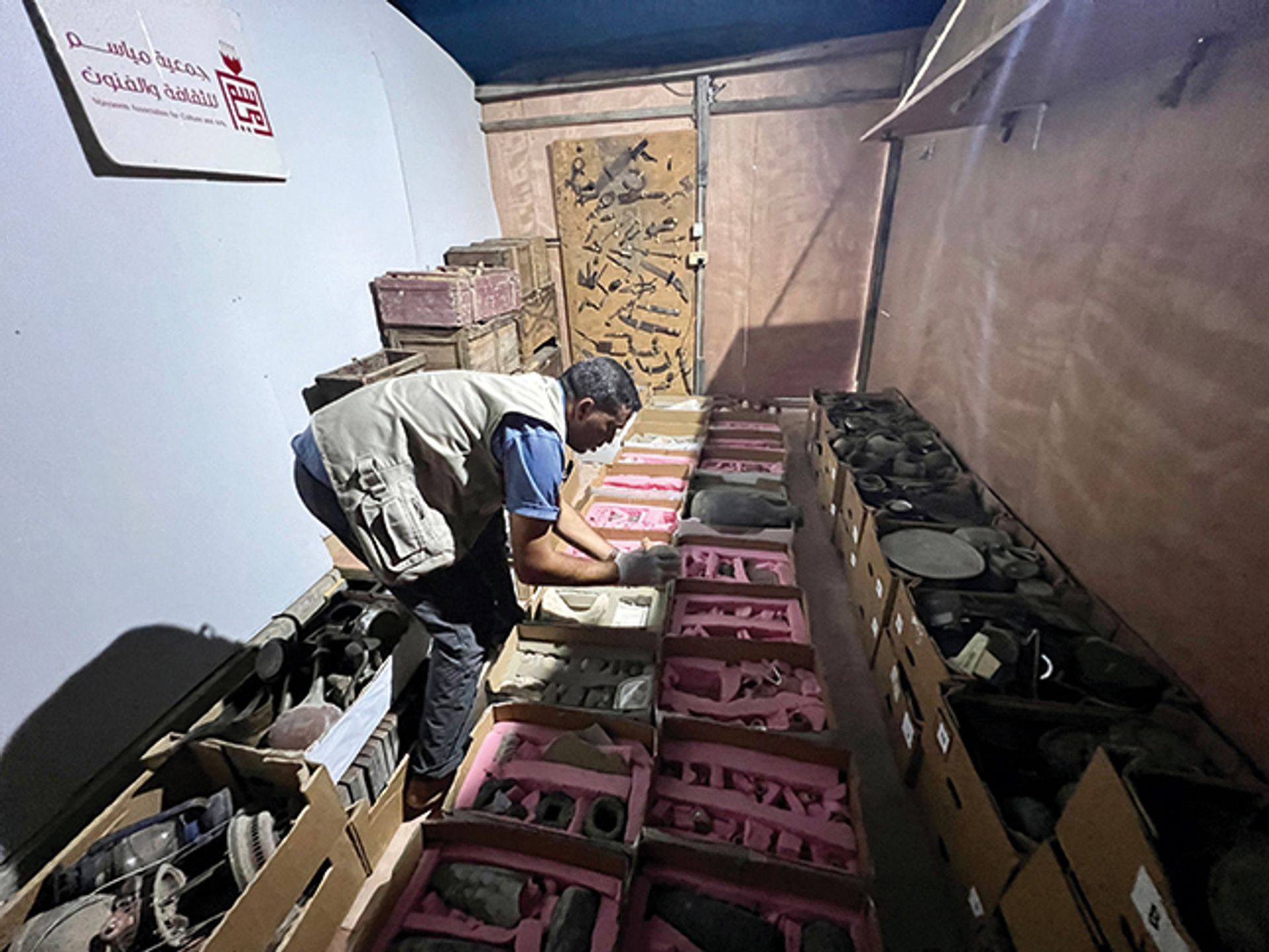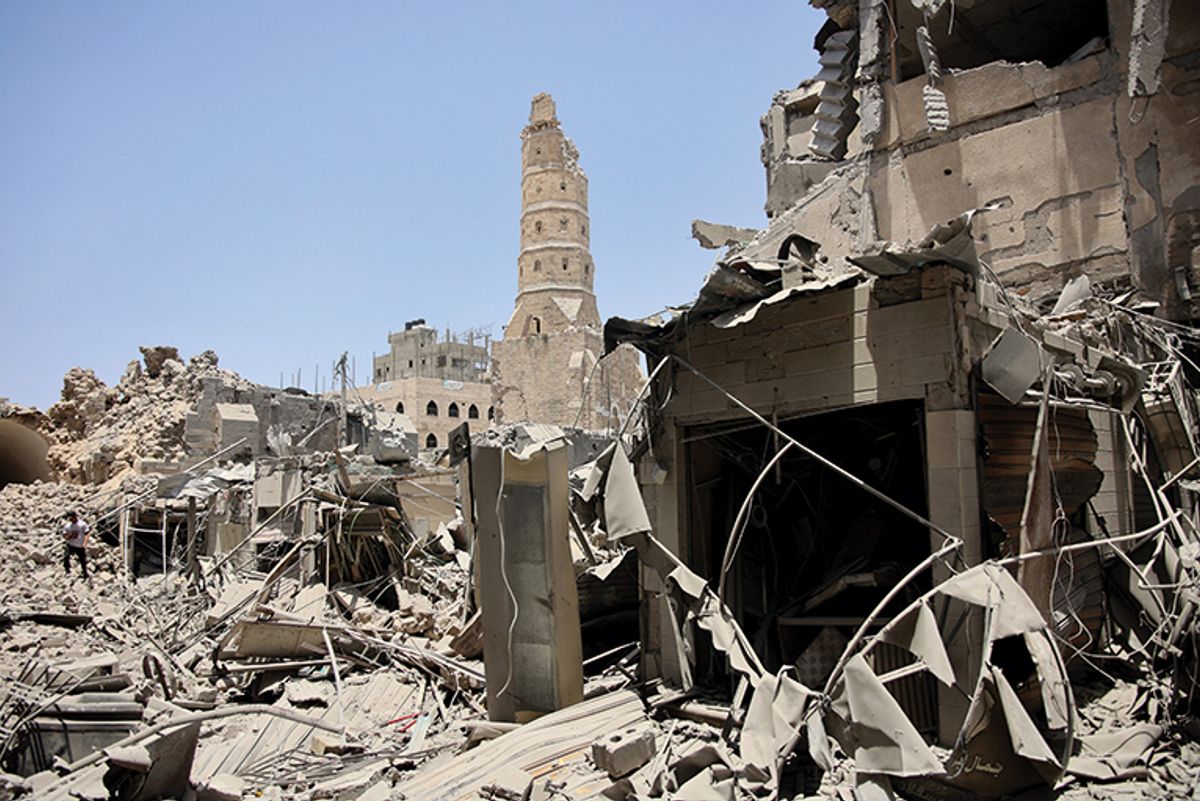As the war in Gaza continues, Palestinians have begun protecting their cultural heritage thanks to a $1m emergency fund from the Swiss-based Aliph Foundation. Experts on the ground in Gaza are evacuating artefacts, documenting damage to historic sites and providing training to cultural enthusiasts to aid safeguarding efforts, The Art Newspaper has learned.
“This is both a national and humanitarian task for us. The history and heritage of Gaza are the heritage of humanity and the world. We think about our heritage every moment,” says Mohammad Abu Lehia, the founder of the Al Qarara Cultural Museum, which was damaged during the war. More than 2,000 items from the museum’s collection were relocated during the recent rescue efforts by the Mayasem Association for Culture and Arts, known as the Mayasem Association, in partnership with the Palestinian Museum in the West Bank. These included archaeological remains such as pottery, tombstones and statues as well as Palestinian traditional crafts.

The Mayasem Association has moved items in the Al Qarara Cultural Museum to safety Mayasem Association for Culture and Arts
Dire conditions in Gaza have made rescue efforts extremely challenging. Abu Lehia says that workers at the Mayasem Association, which was founded in 2021 by his wife Najla Abulehia, had to search extensively for everyday items such as boxes, cardboard and sponges, which could be adapted for storage purposes.
Rescued objects are packed in a “scientific and suitable manner” and prepared “for evacuation in the event that the occupation army invades the area”, according to the association. This work is also being carried out at further undisclosed sites in Gaza.
Aliph, which focuses on protecting cultural heritage in conflict and post-conflict areas, confirms that emergency documentation for damage assessments is being conducted at three major cultural sites in Gaza City: the seventh-century Al Omari Mosque, which was destroyed by Israeli airstrikes in December, Al Saqqa House and the Dar-Farah historic courtyard. The work is carried out in partnership with the Riwaq Centre for Architectural Conservation in the West Bank, and in co-ordination with international organisations such as Unesco.
“Given the overwhelming response from heritage professionals based in Gaza, the West Bank and internationally, and the international and Palestinian concern, rightly so, to protect the cultural heritage, this is something that needs to be done now,” says Sandra Bialystok, the director of communications and partnerships at Aliph. “This is an important priority for many people in the region, and we are here to support them in this endeavour,” she says, emphasising that these efforts are not a hindrance to humanitarian aid efforts.
Training people on the ground has also been a key focus, says Gala-Alexa Amagat, a project manager at Aliph. She highlights that an online training session, originally intended for people in the West Bank, attracted 20 participants from Gaza. “Some had walked for miles to access an internet connection and join the session,” Amagat says, adding that she was “overwhelmed” by their dedication.
Focus on training
Fadel Al Utol, an archaeologist in Gaza who is helping the Mayasem Association with the training sessions, says that at least 15 people are participating in the in-person sessions despite the challenging circumstances. “This is life in Gaza; we overcome the difficulties,” Al Utol says. “I urge all supporters to continue supporting young people in preserving cultural heritage so that hope and love of life continues, along with the preservation of antiquities.”
Bialystok says that protecting cultural heritage is a crucial piece of the “peace-building puzzle”: “It’s our motto, protecting heritage to build peace; it’s a component of peacebuilding. We will continue to be here for as long as we are needed, including once the war ceases, hopefully soon, and into the future.”
In March, the World Bank’s interim damage assessment report stated that Gaza’s “significant heritage properties” had sustained $319m in damages. Compiled in collaboration with the UN and the European Union, the report noted that between 7 October and 26 January, 63% of all heritage sites suffered damage, with 31% destroyed. This figure is believed to be significantly higher now.
More than 40,000 Palestinians have been killed since the start of the conflict, says the local health ministry, while most of Gaza’s population have been driven from their homes. More than 1,200 Israelis were killed in the attack on 7 October 2023, according to Israeli tallies, and 253 people were taken hostage.


